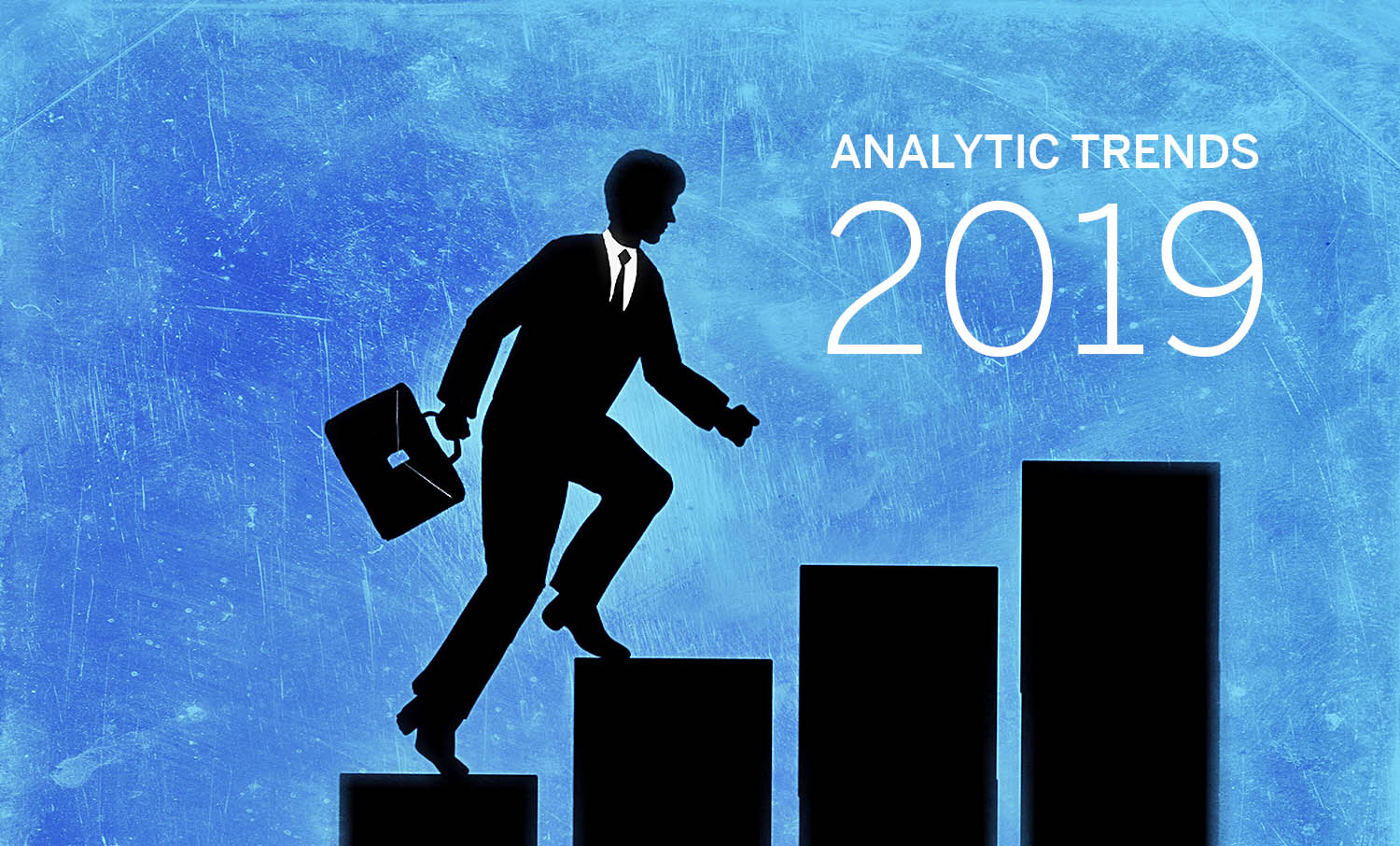2019 is the year that analytics technology starts delivering what users have been dreaming about for over forty years — easy, natural access to reliable business information.
1. Machine learning everywhere. We’ve reached the third great wave of analytics, after semantic-layer business intelligence platforms in the 90s and data discovery in the 2000s. Augmented analytics platforms based on cloud technology and machine learning are breaking down the longest-standing barriers to analytics success. They bring insights to users rather than forcing users to unearth elusive trends, and provide more intuitive interfaces that make it easier to get the data people need to do their jobs.
2. Embedded analytics accelerates. The historical line between operational applications and analytics continues to blur. Thanks to advances in machine learning, prescriptive “intelligent applications” have become a reality. These data-driven, self-learning business processes improve automatically over time and as people use them.
3. Cloud analytics adoption skyrockets. Cloud brings agility and faster innovation to analytics. As business applications move to the cloud, and external data becomes more important, cloud analytics becomes a natural part of enterprise architectures.
The advantages are particularly important for smaller organizations: the cloud offers affordable, on-demand access to analytical and data processing power that was previously reserved for much larger organizations with dedicated analytics teams.
However, some data will never move to the cloud — a nuanced approach is required, leveraging existing analytics investments while moving to hybrid on-premise / cloud analytics architectures.
4. Better user experience drives greater adoption. Advances in speech and text recognition mean users can finally ask business questions using everyday language. AI-assisted data discovery can automatically mine data for insights and propose appropriate views of what’s new, exceptional, or different.
Chat bots and personal assistants provide seamless access to the basic numbers used to run the business. And using real-time systems as a foundation, managers finally get dashboards with all the information they need to run every aspect of the business, in real time, at their fingertips.
5. Compliance drives true data platform adoption, supported by more flexible data management. As it has been for the last forty years, data collection, preparation, and standardization remain the most challenging aspects of analytics. The rise of compliance and privacy concerns are driving the adoption of more standardized approaches — for example, reducing the attractiveness of data discovery architectures that extract and manipulate data separately from core systems.
Real-time processing, data catalogues and new “data orchestration” systems allow organizations to retain a coherent view of data across the organization without having to physically store it in a single place.
6. Data literacy will continue to be a big problem. The biggest barrier to analytics success has never been technology. Giving somebody the best pencil in the world will not make them Picasso.
Analytics culture, skills, and organization continue to be the biggest barriers to turning information into lower costs or increased profits. Organizations must invest as much time and money in analytic skills and incentives as they do in technology.
7. There will be an increasing number of AI fails. Like any powerful technology, AI brings new dangers. Algorithms are sociopaths: they have no knowledge of what they are doing. AI brings amazing opportunities for improved productivity and augmented human intelligence. But it magnifies any existing problems with data quality and data bias and poses unprecedented challenges to privacy and ethics.
Comprehensive governance and data transparency policies are essential. Sadly, things will probably get worse before they get better — organizations must implement ethics processes, councils and external advisors before high-profile disasters hit the headlines.
8. End-to-end decision-making platforms emerge. Analytics has traditionally only paid attention to a small part of the end-to-end “data journey.” Information and insight is useless unless something actually changes in the business.
More holistic, end-to-end approaches to analytics are emerging, not only because of the combination of operations with analytics, but also with more proactive and seamless approaches to converting user analysis into concrete actions. This depends fundamentally on human judgement, consensus, and creativity, but it must be supported by better integration between analytics, traditional business planning activities, and social collaboration platforms.
9. AI and machine learning makes analytics more human. More powerful augmented analytics will eliminate a lot of the work around collecting and processing data, and identifying areas for further investigation. But ultimately people are the most important “technology” required to turn data into business improvement.
In an era where basic decisions can be increasingly automated, more strategic choices rely on uniquely human skills such as creativity, understanding of context, and leadership.
10. New experience analytics. Understanding and optimizing the customer experience is the bedrock of successful digital transformation. Traditional analytics focused on structured data flowing from operational systems. Newer analytic platforms have blended more unstructured data such as text, images, and raw sensor readings into analytic workflows.
The next step is to expand analytics to both operational data and “experience data” — the unique, subjective experiences of individuals as they interact with products, brands, and internal business processes.
Looking forward to 2020 and beyond. With ever-more devices capturing more nuanced data, with technology capabilities accelerating, and powerful machine learning still in its infancy, analytics is poised for a new golden age.

